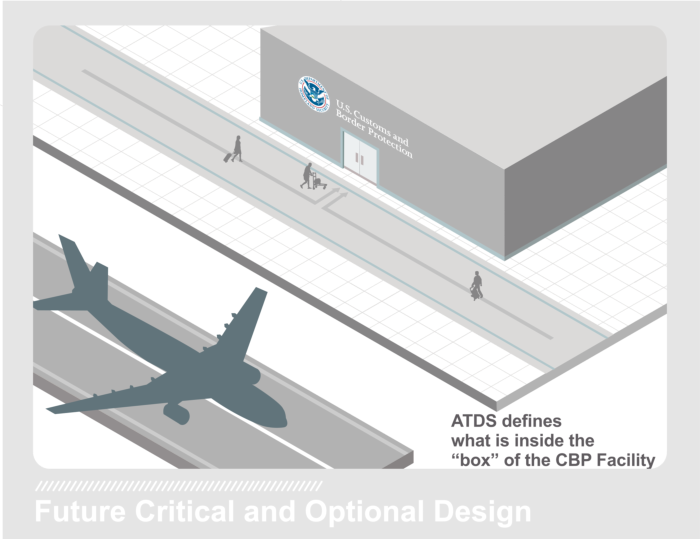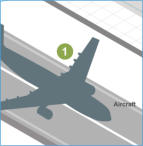

© National Safe Skies Alliance - Authored by InterVISTAS Consulting



CBP Airport Technical Design Standard

Finding 1: Begin Passenger Processes before the FIS
The CBP's workload is expected to grow from 112 million passengers cleared in FY2015 to 245 million by 2036, based on FAA Forecasts. As a result, U.S. airports need to build at least 75% more space, or find processing methods that are 75% more efficient to accommodate growth. While some new facilities are planned (e.g., at ORD and SAN), the lives of the vast majority of facilities need to be extended to accommodate growth. One way is to expand processing areas into the sterile corridor (or the hallway that leads from the aircraft to the FIS) to take full advantage of space that is currently unused.
Airport Applicability
- Medium to high passenger volume - All airport types - All passengers, except booth usersReferences
ATDS (2012) - Section 1.2 outlining the federal authorities applied in the standard - Section 3.4.2 refers to the sterile corridors as gates and specifically figure 3-1 illustrates use of the corridors ATDS (2016 - 90% draft) - Section 1.4 outlining the federal authorities applied in the standard - Section 5.4.1 defining Sterile Corridor Systems - Code ATD-01-01 in Chapter 5





© National Safe Skies Alliance
Authored by InterVISTAS Consulting

CBP Airport Technical Design Standard
Finding 1: Expand Processing
Areas Outside of FIS
For CBP, its workload is expected to grow from 112 million passengers cleared in FY2015 to 245 million by 2036, based on FAA Forecasts . As a result, U.S. airports need to build at least 75% more space, or find processing methods that are 75% more efficient to accommodate growth. While some new facilities are planned (e.g., Chicago O’Hare, San Diego), the lion’s share of facilities need to be life-extended to accommodate growth – one way is to expand processing areas into the sterile corridor to take full advantage of miles of corridor space that are currently unused, and are already
Mobile Passport Control is currently at its
infancy and is eligible for U.S. citizens
and Canadian visitors only. In the long
run, there will be the ability to use
smartphone technologies for all foreign
nationals. At the same time, on-board
WiFi will become more commonplace for
airlines serving international flights to
the United States.
Expanding the hall through kiosk
processing in the sterile corridor: several
airports have implemented successfully
kiosks in the corridor. Careful
consideration of local/state rules are
needed; albeit federal FIS standards have
supremacy.
The sterile corridor should be designed
to enable and lever technologies that
may be used to process travelers before
entering the FIS. Over the past decade,
significant improvements have occurred
to enable improved biometric capture –
with much research to overcome image
blurring, noise (in low-light conditions).



































